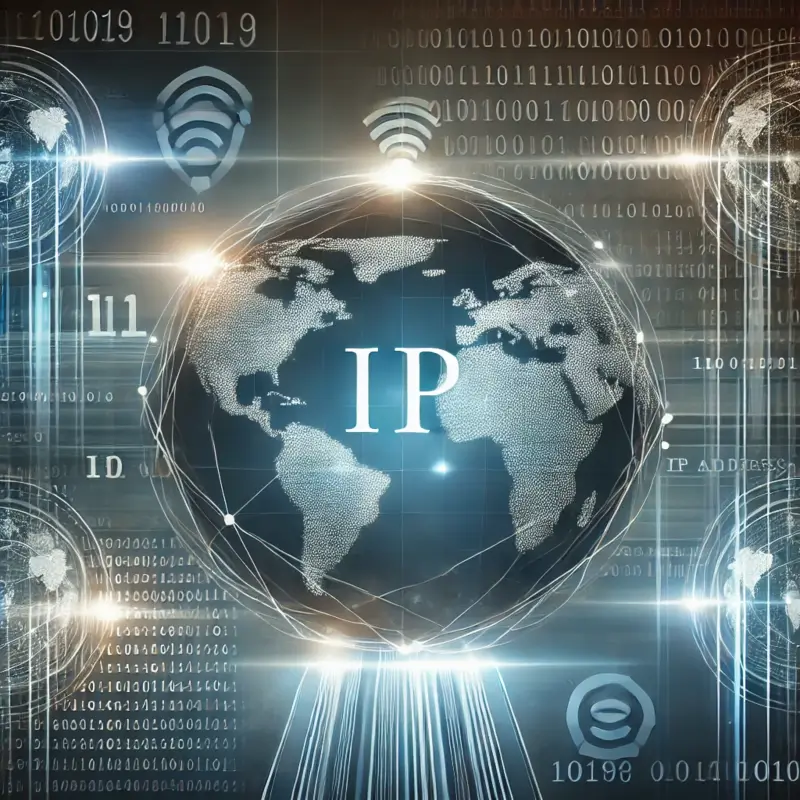IP Address: The Internet's Invisible Handshake

In the vast and intricate world of the internet, where billions of devices connect and communicate, there’s an unsung hero that makes it all possible: the IP address. Short for “Internet Protocol” address, this seemingly simple string of numbers is the backbone of online communication, acting as a unique identifier for every device connected to the internet.
What is an IP Address?
Think of an IP address as your device’s digital address. Just like your home address helps postal workers deliver mail, an IP address helps data packets find their way to your computer, smartphone, or any other internet-enabled device.
An IP address is a numerical label assigned to each device connected to a network that uses the Internet Protocol for communication. It serves two main purposes:
- Identification: It uniquely identifies each device on the network.
- Location: It indicates the device’s location on the network.
Types of IP Addresses
There are two main types of IP addresses:
IPv4
This is the original version of IP addresses, consisting of four sets of numbers separated by dots (e.g., 192.168.1.1). Each set of numbers ranges from 0 to 255, giving us a total of about 4.3 billion unique addresses. While this may seem like a lot, it’s not enough to accommodate the ever-growing number of internet-connected devices.
IPv6
To address the limitations of IPv4, IPv6 was introduced. It uses a more complex format with eight groups of four hexadecimal digits separated by colons (e.g., 2001:0db8:85a3:0000:0000:8a2e:0370:7334). This provides a vastly larger address space, ensuring that we won’t run out of IP addresses anytime soon.
How IP Addresses Work
When you connect to the internet, your device is assigned an IP address by your Internet Service Provider (ISP). This address is like your temporary online identity, allowing you to send and receive data.
Here’s a simplified breakdown of how it works:
- You request a webpage: When you type a website address into your browser, your device sends a request to your ISP’s server.
- ISP finds the website’s IP address: The ISP’s server looks up the website’s domain name (e.g., google.com) in a database to find its corresponding IP address.
- Data packets are sent: The ISP’s server sends data packets containing the website’s information to your device’s IP address.
- You see the webpage: Your device receives the data packets and displays the webpage in your browser.
Importance of IP Addresses
IP addresses are crucial for the functioning of the internet. Without them, devices wouldn’t be able to communicate with each other, and the internet as we know it wouldn’t exist.
IP addresses also play a role in:
- Network security: They can be used to track down malicious activity and block unwanted traffic.
- Geolocation: They can provide a rough estimate of a device’s location, which is used for targeted advertising and content delivery.
- Network management: They help network administrators manage and troubleshoot network issues.
The Future of IP Addresses
As the internet continues to evolve and more devices connect online, IP addresses will remain a fundamental part of its infrastructure. The transition to IPv6 will ensure that we have enough addresses to support this growth.
In the future, we may also see the development of new technologies that further enhance the functionality and security of IP addresses.
Conclusion
IP addresses are the unsung heroes of the internet, working behind the scenes to ensure that data packets reach their intended destinations. They are essential for online communication, network security, and many other aspects of the digital world. As the internet continues to evolve, IP addresses will remain a critical component of its infrastructure. If you need to know your IP address, please use our free IP address test tool!